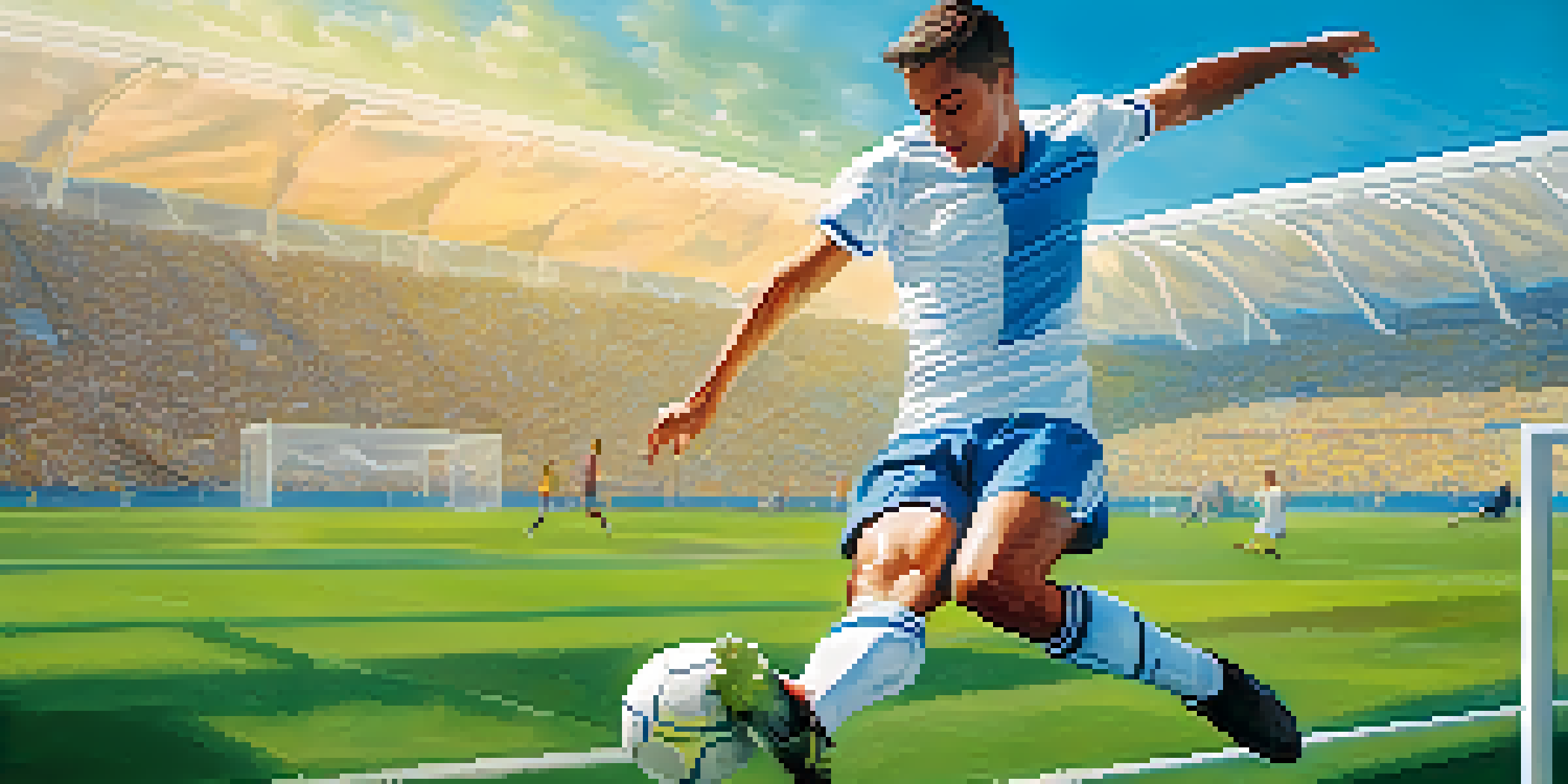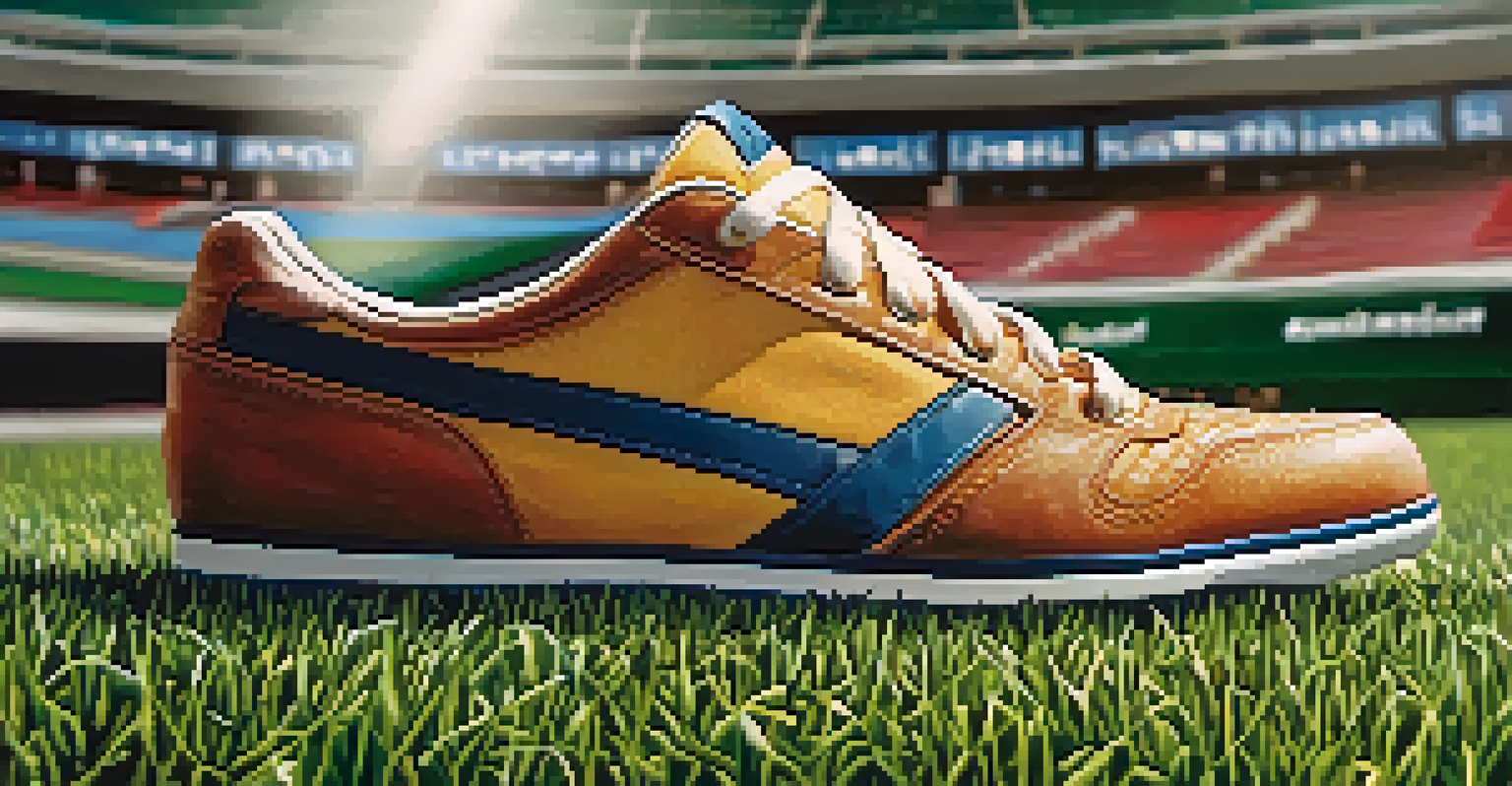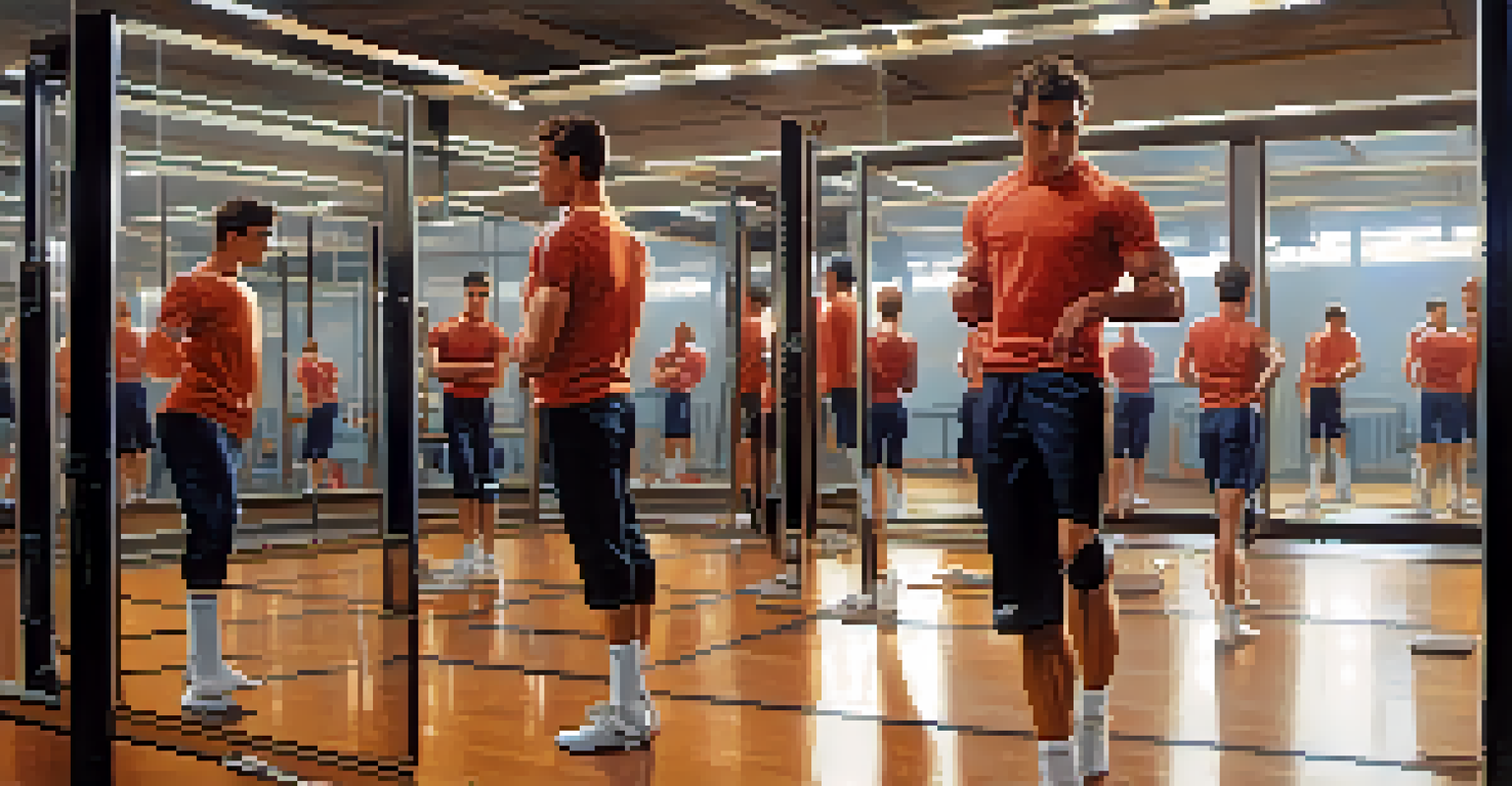The Biomechanics of Kicking: A Scientific Approach to Technique

Understanding Biomechanics in Kicking Techniques
Biomechanics is the study of movement and forces in living organisms. When it comes to kicking, this means analyzing how our muscles and joints work together to produce powerful and accurate strikes. Understanding these principles can help athletes improve their technique and minimize the risk of injury during training or competition.
The more I practice, the luckier I get.
For example, when a soccer player approaches the ball, they need to coordinate their leg movement, hip rotation, and core strength to maximize the force of their kick. This intricate dance of body mechanics is what sets apart an amateur kick from a professional one, showcasing the importance of biomechanics in sports.
By breaking down the kicking motion into phases, from preparation to impact, athletes can better understand how to apply the right amount of force and make adjustments to their form. This knowledge not only enhances performance but also encourages safer practices in sports.
The Role of Muscle Groups in Kicking
Kicking is a full-body activity that engages various muscle groups. The major contributors include the quadriceps, hamstrings, glutes, and hip flexors, all of which work in concert to generate power. The strength and coordination of these muscles are essential for executing an effective kick.

For instance, as the kicking leg swings forward, the quadriceps contract to extend the knee while the hamstrings help to stabilize the movement. Meanwhile, the glutes play a crucial role in providing the necessary power to propel the leg forward. Understanding how these muscles interact can help athletes target their training more effectively.
Biomechanics Enhance Kicking Skills
Understanding biomechanics helps athletes improve their kicking techniques and reduce injury risks.
Incorporating strength training that focuses on these muscle groups, along with flexibility exercises, can lead to improved kicking performance. This holistic approach ensures that all the necessary muscles are conditioned and ready to work together seamlessly during a kick.
The Importance of Kicking Mechanics
Kicking mechanics refer to the specific techniques and body positions that contribute to a successful kick. Proper mechanics not only enhance performance but also help prevent injuries. When athletes kick with correct form, they distribute forces evenly throughout their body, reducing strain on any single joint or muscle.
Success is where preparation and opportunity meet.
For example, the angle of the approach, the positioning of the non-kicking foot, and the follow-through after contact all play significant roles in the mechanics of kicking. A well-executed kick will involve a fluid motion that flows from the approach to the follow-through, maintaining balance and control.
By focusing on improving mechanics, athletes can refine their technique over time. Practicing in front of a mirror or recording kicks can provide visual feedback for adjustments, making it easier to master the art of kicking.
The Impact of Footwear on Kicking Performance
The type of footwear an athlete chooses can significantly influence their kicking performance. Proper shoes provide the necessary grip, support, and comfort, all of which are vital for executing a powerful kick. Different sports often require specific types of shoes designed to enhance traction and stability.
For instance, soccer cleats are designed with studs that dig into the grass, allowing players to plant their feet firmly when kicking. On the other hand, running shoes may not offer the same level of support for lateral movements, potentially impacting kicking mechanics negatively.
Muscle Groups Power Kicking
Key muscle groups work together to generate power and stability during a kick, making targeted training essential.
As athletes experiment with different types of footwear, they should pay attention to how their kicks feel and perform. Finding the right shoe can lead to enhanced performance and greater confidence during play.
The Influence of Surface on Kicking Technique
The surface on which an athlete kicks can also affect technique and performance. Whether it's grass, turf, sand, or a gym floor, each surface presents its own challenges and benefits. Adapting kicking technique to different surfaces can help athletes optimize their performance.
For example, kicking on grass requires a different approach compared to kicking on turf, which is often more forgiving and allows for faster play. Athletes must adjust their footing and balance to accommodate these variations, ensuring they maintain control during their kicks.
Practicing on various surfaces can enhance overall kicking ability. It encourages adaptability and helps athletes understand how to adjust their technique for optimal performance, regardless of the playing field.
The Psychological Aspects of Kicking
The mental game is just as important as the physical when it comes to kicking. Athletes must cultivate focus, confidence, and composure to execute their kicks effectively, especially in high-pressure situations. A strong mental approach can be the difference between a successful kick and a missed opportunity.
Visualization techniques, where athletes mentally rehearse their kicks, can enhance muscle memory and boost confidence. This mental practice prepares athletes for real-game scenarios, helping them stay calm and focused when it matters most.
Footwear and Surface Matter
The choice of footwear and the kicking surface significantly influence performance and technique.
Furthermore, developing a positive mindset can help athletes overcome performance anxiety. By trusting their training and embracing the moment, they can channel their energy into delivering powerful and accurate kicks.
Incorporating Biomechanics into Training Regimens
To maximize the benefits of biomechanics in kicking, athletes should incorporate specific exercises into their training regimens. Focusing on strength, flexibility, and technique can lead to significant improvements in kicking performance. Tailoring workouts to address the various aspects of biomechanics ensures comprehensive development.
For example, plyometric exercises can enhance explosive power, while balance drills improve stability during kicks. Additionally, flexibility training helps maintain a full range of motion, which is crucial for executing effective kicks without injury.

Working with coaches or trainers who understand biomechanics can provide valuable insights into personalized training plans. By taking a scientific approach to their training, athletes can unlock their full potential and elevate their kicking technique.